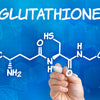3 of the healthiest fruits in the world

Did you know that bell peppers are actually fruits? As are pumpkins, tomatoes, string beans, eggplants, and many more foods you might have thought were vegetables.
This is because, technically, as scientists explain, "Botanically speaking, a fruit is a seed-bearing structure that develops from the ovary of a flowering plant, whereas vegetables are all other plant parts, such as roots, leaves, and stems."
According to this definition of fruits, here are the three healthiest, most nutrient-dense ones you can eat.
Red bell peppers - a vitamin C powerhouse
Sweet red bell peppers protect us against pollutants, inhibit cancer cell growth, and support eye health.
Did you know that just one large red bell pepper contains 349% of your recommended daily intake (RDI) for vitamin C? We really cannot get enough of this powerful antioxidant.
First, we cannot absorb iron without it. Secondly, we cannot manufacture collagen without it.
This is a significant reason why smokers begin to look older faster - smoking depletes vitamin C in the body, causing a decline in collagen synthesis. So, all the vitamin C - in red bell peppers, for example - helps to protect us from free radical damage, the slings and arrows in our environment caused by toxins that damage our cells and alter DNA in ways that can cause cancer.
Of course, antioxidants also protect us against sun damage and preserve our eye health.
Red bell peppers are also rich in a phytonutrient and antioxidant called lycopene. You might have heard about tomatoes being rich in this compound.
Lycopene helps prevent many cancers, especially lung and prostate cancers. Red bell peppers are also very high in vitamins B6 and magnesium and contain 100% of our RDI for vitamin A - which is so important for our eyes, along with lutein and zeaxanthin, two essential phytonutrients for the eyes (but not as much as orange peppers).
Consume them with a good source of (healthy) fats like grass-fed butter, or make your own dressing with extra virgin olive oil to make sure you absorb fat-soluble vitamin A!
Pumpkins are wonderful for the eyes and your skin
Pumpkins are one of the healthiest fruits around. Even their seeds and the pure essential oils extracted from them have powerful nutrients and constituents that have many health benefits.
In fact, one cup of cooked pumpkin contains 245% of eye-nourishing vitamin A, 19% of the RDI for vitamin C, nearly a fifth of our daily requirement of potassium, 10% of our needs for vitamin E, and 11% of our RDI for B6 and magnesium.
Being so rich in vitamins A, E, and C, it's also wonderful for the skin, helping promote collagen synthesis. Simply put, it would be wise to add pumpkin to a bone broth stew to really promote collagen synthesis.
Grapefruit is a super prostate and colon cancer fighter
Grapefruit is rich in vitamins A and C and contains an abundance of antioxidants like lycopene and limonene, which are powerhouse cancer fighters. Again, lycopene is a phytonutrient carotenoid, and pink grapefruit (not white) is one fruit (along with lycopene-rich tomatoes, apricots, pink grapefruit, watermelon, papaya, and guava) that has proven to help reduce men's risk of developing prostate cancer.
In a recent study of 130 male prostate cancer patients and 274 male control patients, those consuming the most lycopene-rich green tea and eating the most lycopene-rich fruits and vegetables had an 86% reduced risk of prostate cancer.
Grapefruit may also help prevent and fight colon cancer. In studies on rats injected with colon cancer cells, specific phytonutrients in grapefruit such as apigenin, hesperidin, limonin, naringin, naringenin, and nobiletin helped not only to induce apoptosis (programmed cell death) in colon cancer cells, they also spurred on the growth of new, healthy colon cancer cells!
In fact, phytonutrient naringenin has actually been proven to repair damaged DNA in prostate cancer cells!
Sources for this article include:






